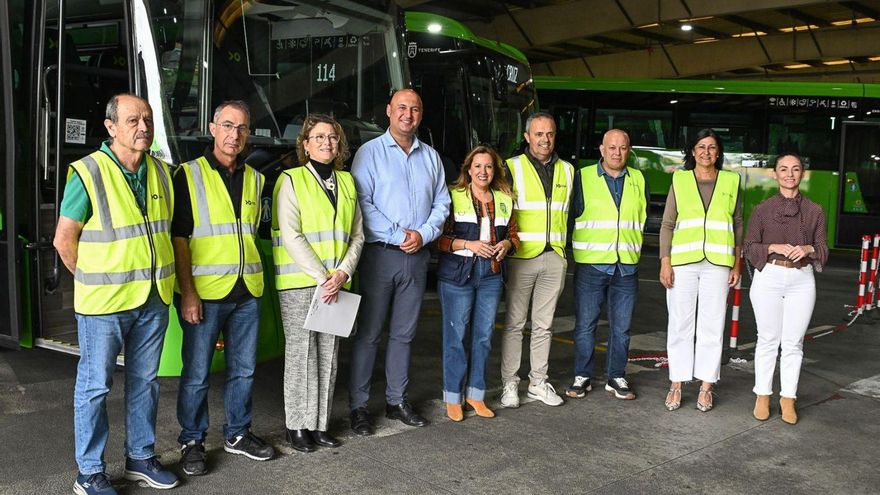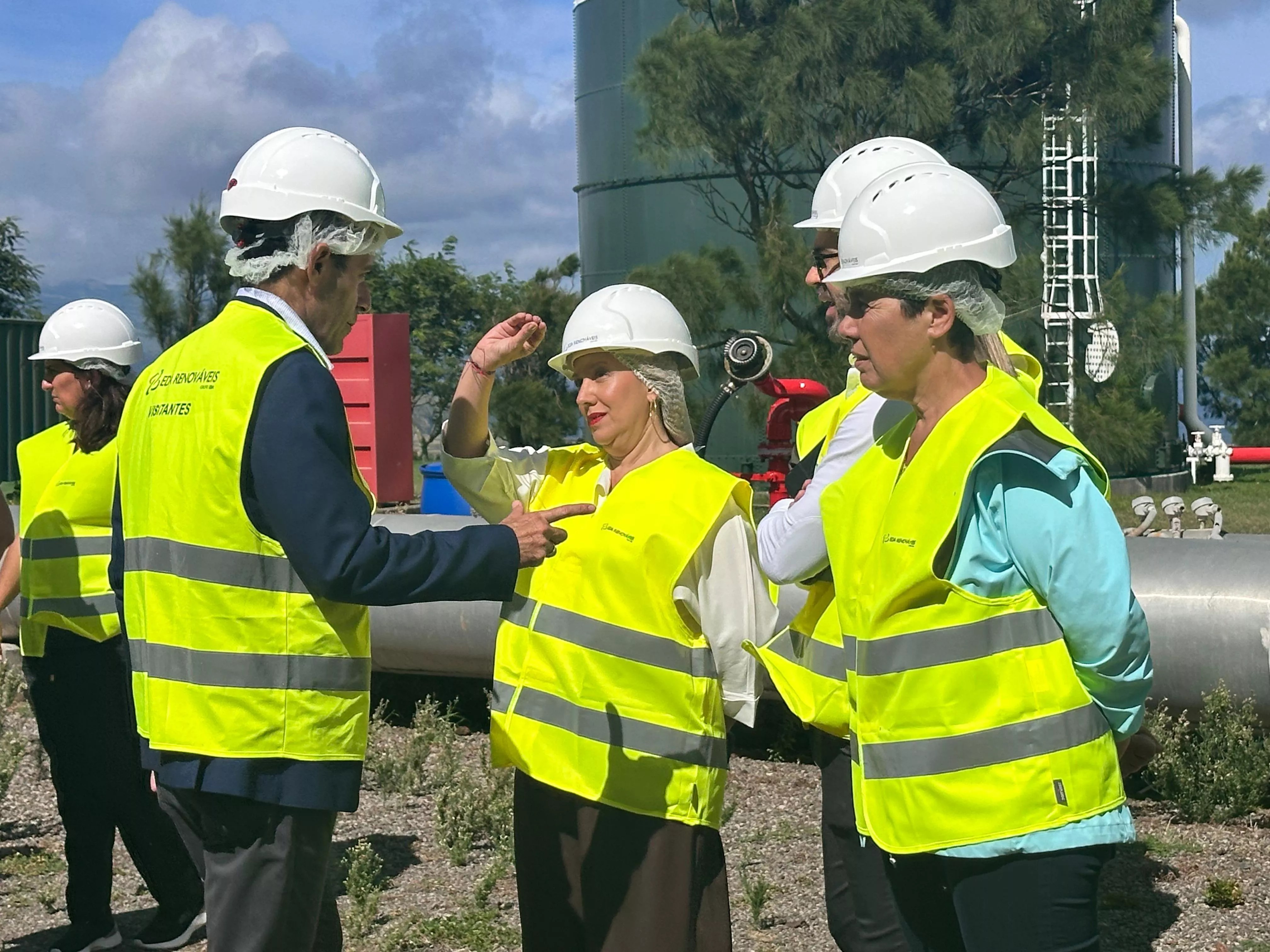
The council enhances public transport in the south with additional lines, increased frequencies and new buses. Notably, the newly introduced line 114 will forge a more direct and frequent connection between San Isidro and Santa Cruz; the 883 shuttle in Las Chafiras, operational from Monday to Saturday, will ease local traffic and enhance the efficiency of lines 415, 470, and 483 on the TF-1; also, line 111 will now terminate at the Costa Adeje station, while frequencies of the 416 (Granadilla-the Christians), the 417 (Costa Adeje-Guía de Isora), and the 120 (Santa Cruz-Güímar) will be increased.
Yesterday, Rosa Dávila, president of the Insular Corporation, unveiled the Plan for the enhancement and reinforcement of public transport in the south. This reorganisation of the Titsa service includes the addition of 13 new buses and 40 out of the 52 drivers that the public company plans to incorporate. “The south of Tenerife already accommodates around 20 million passengers annually, making the bolstering of public transport in this region an absolute priority,” she stated. This is a structural commitment to enhance the service as “we aim for a public transport system that is quicker, more punctual, and better interconnected.”
Line 114 will commence operations on Monday, connecting the San Isidro stop, which serves over 4,000 users daily, to Santa Cruz, stopping at all TF-1 locations down to Punta Prieta (Güímar), and then proceeding directly to the interchange. Additionally, for the first time on long-distance services, the provision for passengers with reduced mobility will expand from one to two spaces.
Line 111 will experience a reconfiguration by terminating at the Costa Adeje station and no longer passing through Christians. Line 450 will be enhanced between San Isidro and the Christians, increasing its frequency to every 20 minutes.
Line 883 will serve as the internal shuttle for Las Chafiras (Mar side), operating from 7:30 am to 7:30 pm. Consequently, lines 415, 470, and 483 will not route through the Chafiras core but will continue along the southern highway. These three lines will maintain their usual routes on Sundays. Titsa has also proposed the establishment of new stops adjacent to the South Golf departure point and Tenbel-Commercial Avenue.
This plan features an increase in services on bus routes with high demand: the 416 (Granadilla – the Christians) will see enhanced frequencies on weekdays, while the 417 (Costa Adeje -Guía de Isora) will receive additional reinforcement on weekdays. The 120 (Santa Cruz -Güimar) will also increase its frequency, including earlier start times on Saturdays, Sundays, and holidays from Güímar.
In 2024, Titsa plans to carry 82.2 million passengers, with 19,900,837 using the southern routes (24.2%), reflecting a 20.25% rise compared to 2023 (more than 3.3 million additional travellers). The most frequented lines included 467, 473, and 447, covering the Christians, Costa Adeje, La Caleta, and Callao Salvaje. In the first quarter of this year, 21,563,747 passengers were transported, marking a 7.97% increase (1,592,633 new passengers within three months). The South region generated the second-highest demand, with 5,404,565 passengers, accounting for 25.1% of the total island traffic and exhibiting the most significant year-on-year growth at 9.24%, outpacing the centre (+7.91%), north (+8.40%), and long-distance (+5.83%).
Eulalia García, the Insular Mobility Councillor, expressed that “these figures highlight the necessity of continually expanding and improving the public transport network in the island’s south, as outlined in the plan initiated by the Cabildo de Tenerife and Titsa, which includes new lines, additional buses, and improved connectivity.” This initiative is part of a broader strategy from the Cabildo, which involves renewing and expanding the fleet with 320 buses from 2024 to 2026, involving an investment of 113.4 million euros. “A significant portion will be prioritised for the southern region, where some of the most congested services are located,” Garcia clarified.
This initiative aims to “strengthen the lines with the highest demand, enhance punctuality, replace outdated vehicles, and move towards a more efficient, sustainable, and accessible mobility system that reduces reliance on cars and aids in alleviating congestion on the main island routes,” Rosa Dávila added.















